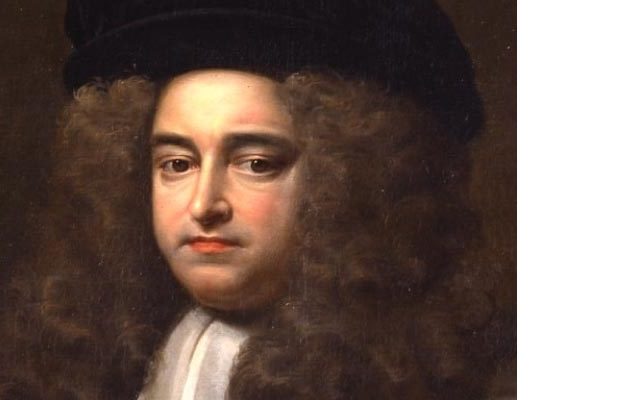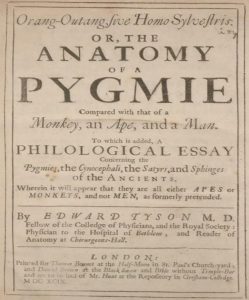
In the annexes of the Clark Library, UCLA, safely catalogued and shelved, sits the one of the most important books in history of medicine, Orang-outang sive Homo Sylvestris: or the Anatomy of a Pygmie. It tells the story of a young doctor and his foray into what we now refer to as comparative anatomy. This work would go on to influence not only medicine but also the fields of comparative anatomy and eventually evolutionary biology. It all began in 1667, when a young man from Bristol, Edward Tyson, arrived at Magdalen College, Oxford to further his studies in the sciences.

For students of the natural sciences, the year of 1667 at Oxford University was a pivotal time. The previous decades had seen a surge in academic advances and innovations particularly in the study of natural philosophy. Scientific virtuosi such as Robert Boyle, Robert Hooke and John Locke, were all honing their academic crafts in the hallowed halls of Oxford. The young Tyson’s interest in anatomy and natural philosophy would be influenced by these great minds propelling him to eventually complete his M.B.B.S. from Oxford. After completing his medical degree, driven by an enduring interest in anatomy and natural philosophy fostered by his exposure to these great thinkers, Tyson moved to the metropolis of London to begin his professional medical career. And thus began, the medical journey of one of the most important and arguably one of the least well-known figures in medical history, comparative anatomy, and evolutionary biology.
As the years progressed in London, Tyson’s interest and skill in anatomical dissection continued to grow and influence his belief in the Great Chain of Being. The year that would in many ways alter the course of medicine and biology is 1698, when Edward Tyson–11 years into his medical practice–is introduced to a sick chimpanzee from what is now known as Angola, which he would refer to as his “Pygmie.” Although he could not save the life of this chimpanzee, in death the dissection of this animal would go on to serve as the inspiration for his seminal work, Orang-outang sive Homo Sylvestris: or the Anatomy of a Pygmie. Although Tyson’s work is one of the keystones in the practice and development of Western medical and scientific thought, often ranked alongside the works of Newton, Copernicus, and Vesalius, few if any are aware of his name, his work, or its importance.
–Arie Nair, Research Assistant, William Andrews Clark Memorial Library, UCLA.

